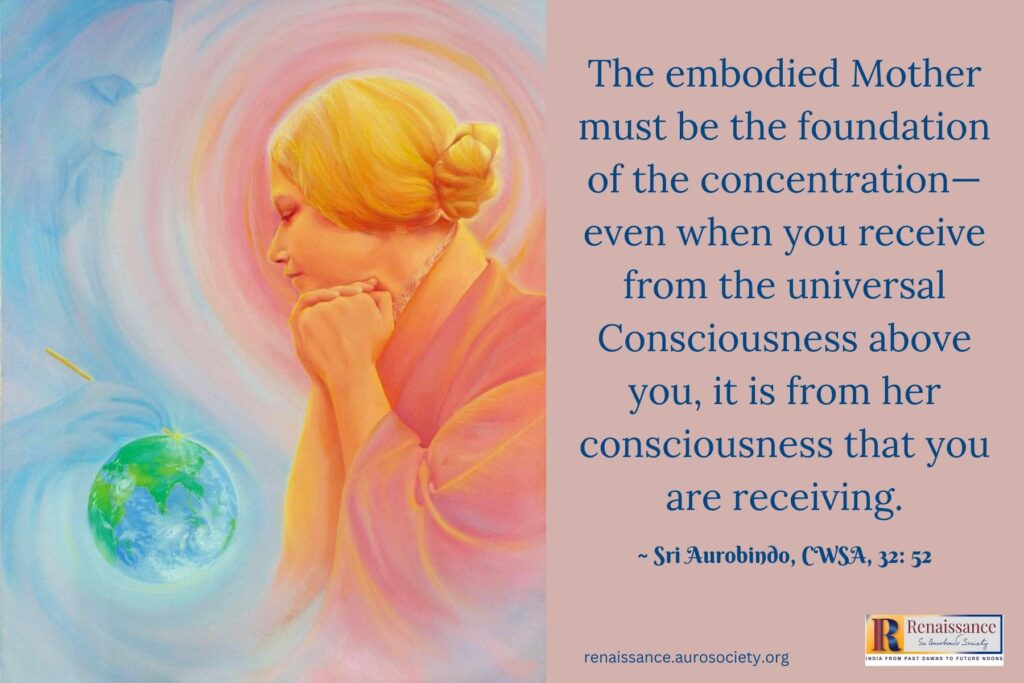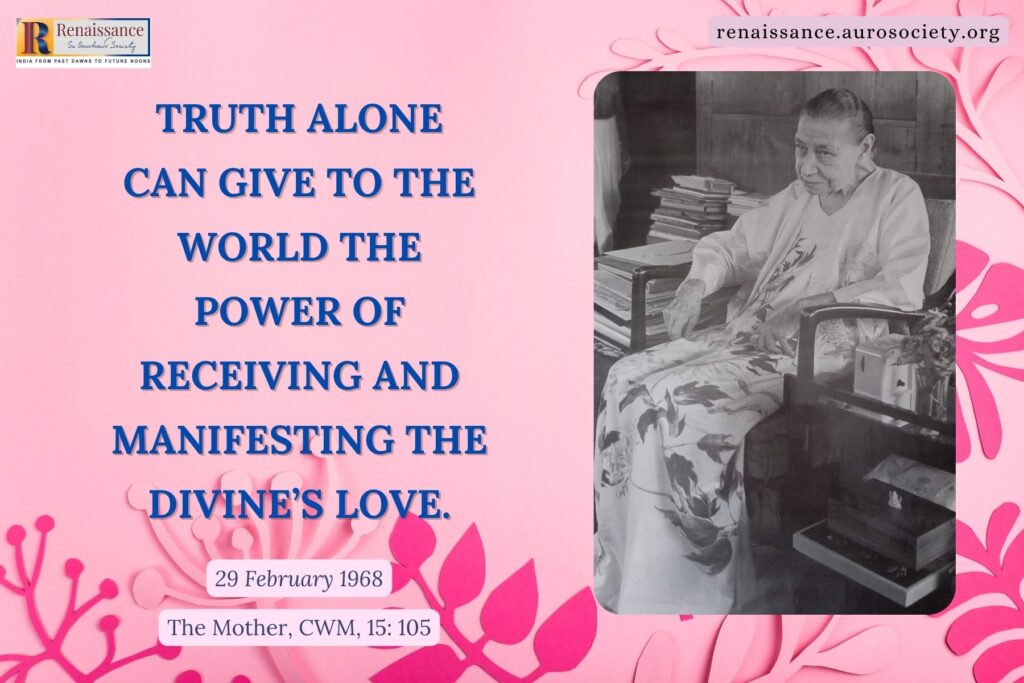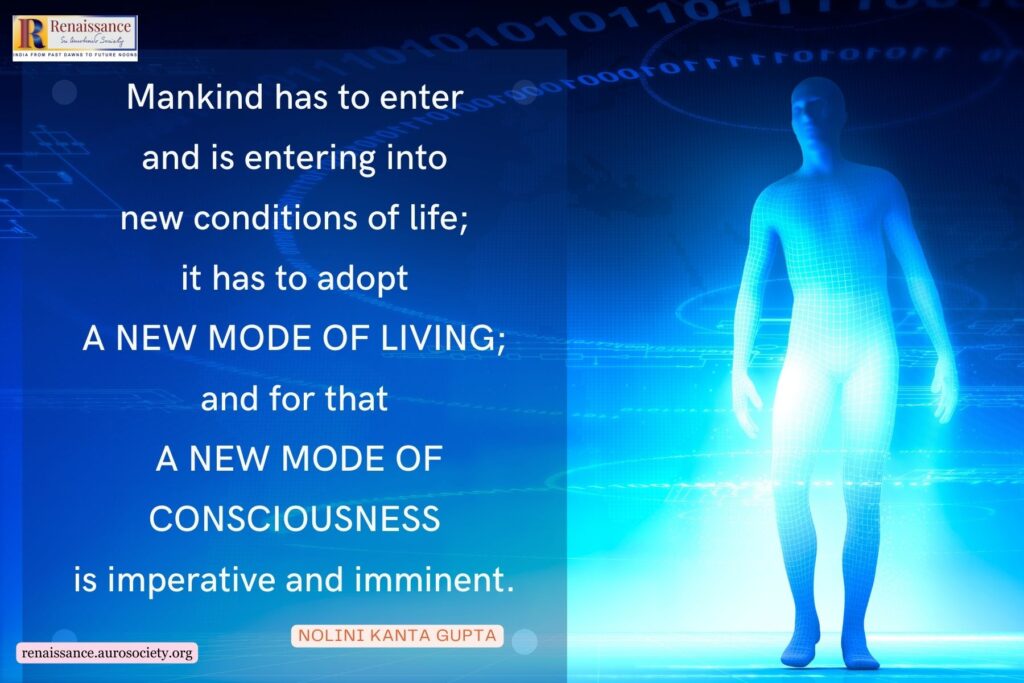Editor’s note: In the ‘Book of the Month’, we present a small biography of Major Somnath Sharma, the first recipient of the Param Vir Chakra in independent India. Shyam Kumari, a senior member of Sri Aurobindo Ashram, has written and published this as part of a series of booklets titled ‘Our Heroes: Param Vir Chakra Recipients.’ Her aim is to make the stories of valour and courage reach a large number of Indian youth in schools and colleges.
We begin with the Foreword by (Late) Maj. General K. K. Tewari and Author’s Introduction to the series. This is followed by part 1 of the life-story of Major Somnath Sharma. We shall continue this in the upcoming issues.

Foreword by (Late) Maj. General K. K. Tewari, PVSM, AVSM
I consider it a privilege to be asked to write a ‘Foreword’ to this first booklet in a series on ‘Our Heroes’ and that too for my dear friend – the first recipient of free India’s highest decoration in battle, the Param Vir Chakra. He is undoubtedly the saviour of Kashmir. A ‘born’ soldier whom I had known for long years. After our commissioning into the then British India Army in 1942, (he was a few months senior to me), we served in World War II in Burma and later for the amphibious assault for the recapture of Malaya as part of 25th Indian Division.
This series of booklets, on modern Indian Heroes serves an important and long overdue need. Stories of valour and heroism awaken a spirit of emulation in others. There is nothing more precious than life. And yet, a soldier in the country’s service, may be called upon to offer this most precious of all things as if it were a mere trifle.
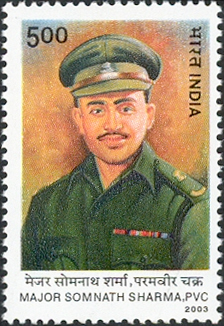
In five decades since India’s independence, the Indian soldier has repeatedly made the supreme sacrifice. India owes an immeasurable debt to the untold thousands of soldiers who have died uncelebrated in her service. The 21 recipients of the Param Vir Chakra are the few acknowledged symbols of the unknown soldiers and their many exceptional acts of courage and sacrifice.
A willful act of self sacrifice performed as an act of duty can only come from a tremendous training in character. What high training engenders the fortitude and bravery which converts ordinary boys, and increasingly now, girls into selfless heroes? Were it possible to adapt this training in character and bravery to the needs of civil life, India would be an extremely effective society.
The need of the hour is to find the methods and means to generalize this capacity for heroism, routinely demonstrated by soldiers defending India’s borders, into the youth of India who constitute the largest segment of India’s population and are the hope of her future.
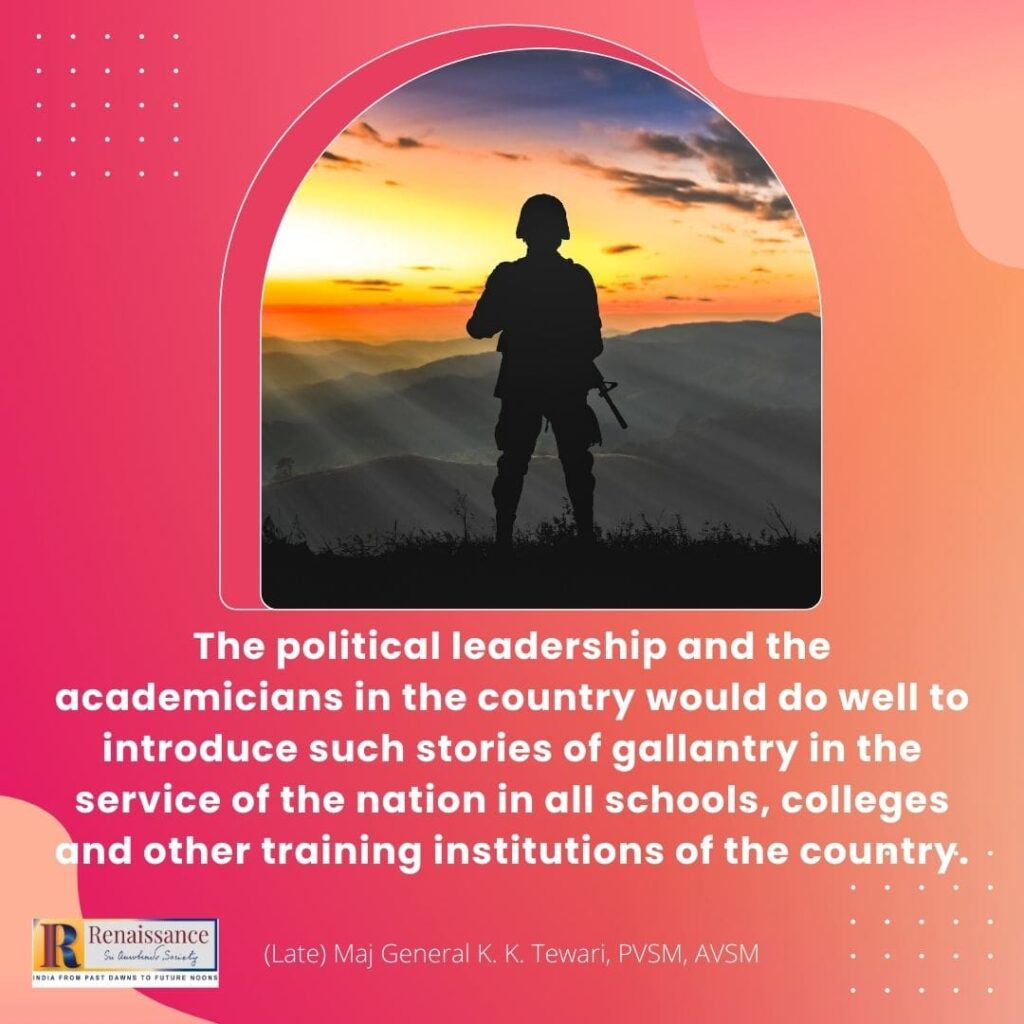
It is befitting that this series of booklets is being published by the Vraja Trust in Pondicherry. And the author-publisher Ms. Shyam Kumari deserves to be complimented on this laudable project she has undertaken.
The political leadership and the academicians in the country would do well to introduce such stories of gallantry in the service of the nation in all schools, colleges and other training institutions of the country. Sri Aurobindo has described the need for awakening a spirit in the service of the nation in an article titled “The Bourgeois and the Samurai” written in the early 20th century while comparing India and japan, which should be read by all thinking Indians.
Introduction to the series ‘Our Heroes’
For a nation to preserve its independence and protect itself against foreign domination, it is imperative that it awakens the spirit of bravery and establishes the ideal of the Kshatriya in the hearts of its citizens.
At a particular epoch of Indian history, due to the influence of the doctrine of the unreality of life and the theory of Mayavad or Illusionism, India lost her strength. Indians forgot the ideals of bravery as embodied by her ancient heroes, Lord Ram, Lord Krishna, Arjun and Bhima, to name only a few. Due to an excessive stress on the life beyond, the life-Instinct in the Indians dwindled. The number of Warriors and soldiers decreased, while those of Sannyasins and mendicants increased. It is said that at one time in Bihar alone there were nine lakh monasteries.
Belief in the unreality of life caused India to lose her grip on the outer world. As a result foreign invaders and barbarians marched into India and looted and crushed the country repeatedly. Lakhs of Indians were butchered and millions were forcibly converted to the religion of the invaders. The matchless bravery of India seemed lost. For centuries India remained a slave nation, exploited by different conquerors. Indians lost the right to walk with their heads held high; worse still, the nation lost its self-confidence and self-respect.
After centuries of torpor the spirit of nationalism awoke in the 19th Century.
The real battle for freedom of the country began in 1857 with the sacrifice of Queen Lakshmi Bai of Jhansi. Thousands of freedom fighters and countless soldiers died in the battle of liberation or languished in British jails for decades. They bore the terrible atrocities of the Cellular jail in the Andamans and fearlessly faced the batons, bayonets and bullets of the British police and the British army. Many were killed or exiled. As a result of the sacrifice of these martyrs the great day of 15th august 1947 dawned, the chains of slavery were severed, India regained her freedom and once again we could hold our heads high.
Read from our Book of the Month archives:
The Tale of My Exile: Twelve Years in the Andamans
Unfortunately, we seem to be forgetting the story of the subjection of our country. On the one hand the political arena has become a dark field where the lowest universal forces have become active. On the other hand, forgetting the shameful centuries of slavery, forgetting the sacrifice of those who gave their lives so that the country might gain freedom, we have become enamoured of wealth and comfort. Our young men are receiving very high, almost unthought of, salaries from multinational corporations while, sadly, the Indian army is short of officers.
Today India is surrounded by hostile neighbours. China and Pakistan seem to have become our eternal enemies. From Tibet’s caves and from its submarines based in Burma, scores of China’s nuclear missiles are targeted towards India. In the present circumstances, no weak nation can hope to remain safe. Powerful nations can crush any weak nation. If India becomes weak, she can be dominated and conquered by other powers.
To safeguard her independence, India needs to keep the flame of nationalism and bravery burning brightly in the hearts of her children.
To kindle the flame of self-sacrifice, it is necessary to imprint in the hearts of the youth the stories of our revolutionary heroes who suffered terrible atrocities and even climbed the gallows with a smile and the cry “Bharatmata ki jai” on their lips. Also, we should tell them the stories of our brave soldiers and officers who have sacrificed their lives in the defence of the country after independence.
To imprint in the hearts of each child, teenager and youth of the nation the sacred life stories of these martyrs I have undertaken to write and publish them in English and in Hindi simultaneously. The work of translating and publishing them in the major Indian languages has also begun because the stories will be more effective if the children read them in their mother tongue.
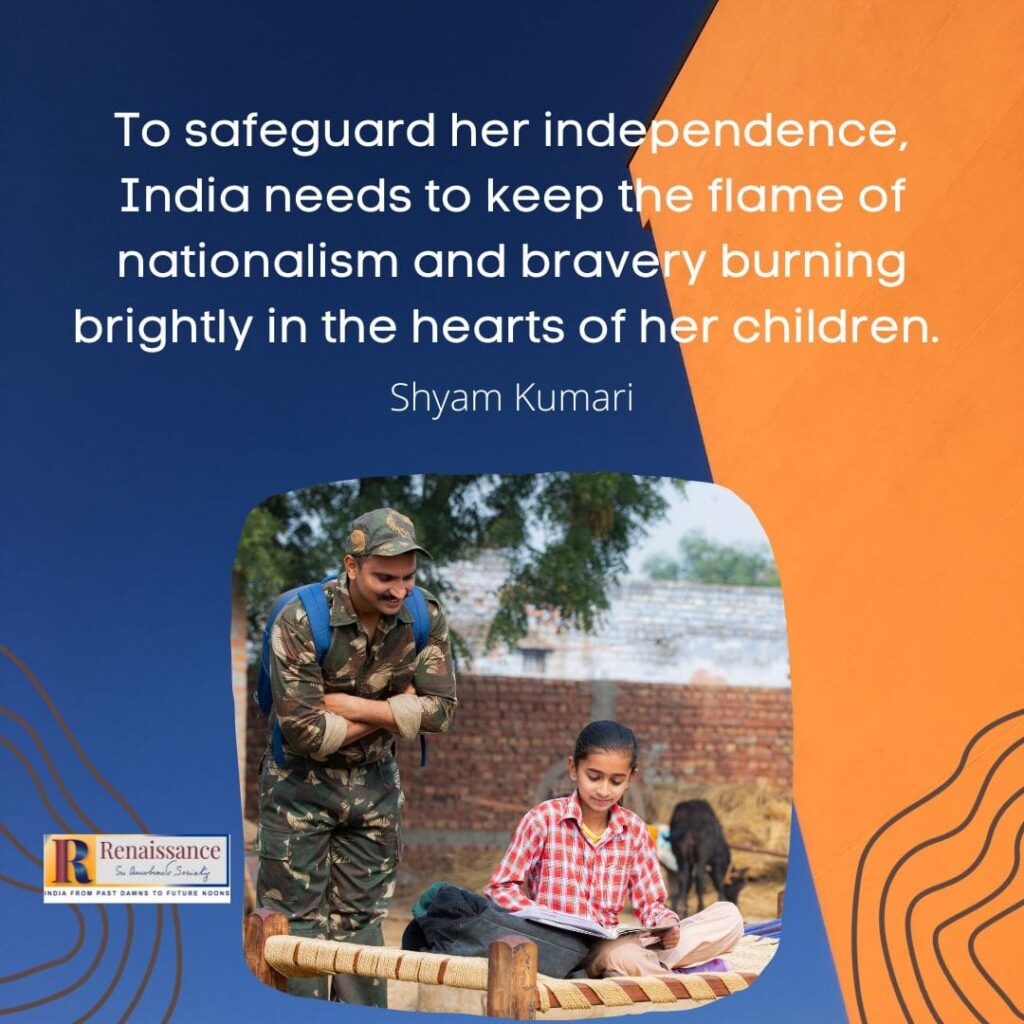
It is my dream that each school and college in India should adopt one of these brave men as its hero and its role model.
Each school should install the photograph of its chosen hero in its hall or office and print his photo on the school stationery. All the prizes which schools routinely give to their students could be named after their adopted hero. The school could narrate the story of their hero on each 15th August and 26th January. The story should be told and retold and acted out by the students.
Everyday after the morning assembly the students should salute and raise slogans in praise of their school hero. Schools could take their students for pilgrimage to the birthplace of their chosen hero, or to the place where he laid down his life or to his regimental headquarters. The effect will be that a day will come when the hero adopted by a school will become a vibrant person living in the heart of each student.
If this is done, the spirit of the Kshatriya will reawaken in the children of India. They will become burning flames of nationalism.
They will compete to be the first to sacrifice their lives for the country. Then in the villages and cities of India, in each lane and by-lane will be born heroes like khudiram Bose, Chandrashekhar ‘Azad’, Sardar Bhagat Singh and the recipients of the Param Vir Chakra of the Indian armed forces. Then no nation, however powerful, will dare to invade India.
An independent India, a great India, will establish the rule of Truth in the world, and will fulfill the prophecy of Sri Aurobindo by becoming the guru of the world.
I am grateful for the encouragement and help I have received from His Excellency Lt. Governor of Pondicherry, Lt. Gen. M.M. Lakhera, PVSM, AVSM, VSM, (Retd.), (Late) Maj. Gen. K.K. Tewari, PVSM, AVSM, Prof. Kittu Reddy, Larry Seidlitz (editor of Collaboration) and my sister Raka Agarwal.
Also I thank Maj. Gen. Ian Cardozo, whose book, Paramvir – Our heroes In Battle, supplied me with valuable information about the Param Vir Chakra recipients. Maj. Gen. K. K. Tewari and Lt. Governor Lt Gen. M. M. lakhera approached the different regiments of the Param Vir Chakra recipients and got additional matter from them, as well as from other sources. These stories would not have been complete without this information. I express my gratitude to both.
I am thankful to Maj. General K. K. Tewari who gave me all the relevant papers about Major Somnath Sharma and am also deeply thankful to Dr. Maj. Kamla tewari (Retd.) who, upon my request, revealed for the first time her heart-rending experience about her dear brother’s death.
I quote from a prayer written by Sri Aurobindo, which I hope will become the constant prayer of numerous children of Mother India:
“Mother Durga! India lies low in selfishness and fearfulness and littleness. Make us great, make our efforts great, our hearts vast, make us true to our resolve. May we no longer desire the small, void of energy, given to laziness, stricken with fear.”
~ from Hymn to Durga
With humble Pranams to Sri Aurobindo and the Mother,
~ Shyam Kumari, Sri Aurobindo Ashram, Pondicherry
Listen to the recitation of
Hymn to Durga by Sri Aurobindo
The First Winner of the Param Vir Chakra
Major Somnath Sharma
PART 1
Guns started booming in May 1999 in the Kargil sector in Kashmir. Loud, exploding bombs, the boom of guns, the whistling of bullets, broken rocks flying, blood flowing from the bodies of martyrs, and the ruthlessness of the enemy, these reminded one of the 1947-48 war. In fact, war had been going on in Kashmir since 1947 – sometimes pitched and at other times clandestinely.
Brave sons of India have been sacrificing their lives in Kashmir continuously but sacred territories captured by our troops in war have been returned to Pakistan by our politicians charmed by the subsequent sweet talk of Pakistani leaders. Who can tell, how many more Indian lives will have to be sacrificed in Kashmir!
One of the first martyrs to lay down his life in the defence of Kashmir was Major Somnath Sharma, who through supreme sacrifice, prevented Kashmir from being taken over by Pakistan.
The country will always be indebted to him. His story is recorded in golden letters in the military history of the Indian Army. The nation honoured him with the posthumous award of India’s first Param Vir Chakra to show its gratitude for bravery of the most exceptional order.
Also see:
The Conquest of India by the English
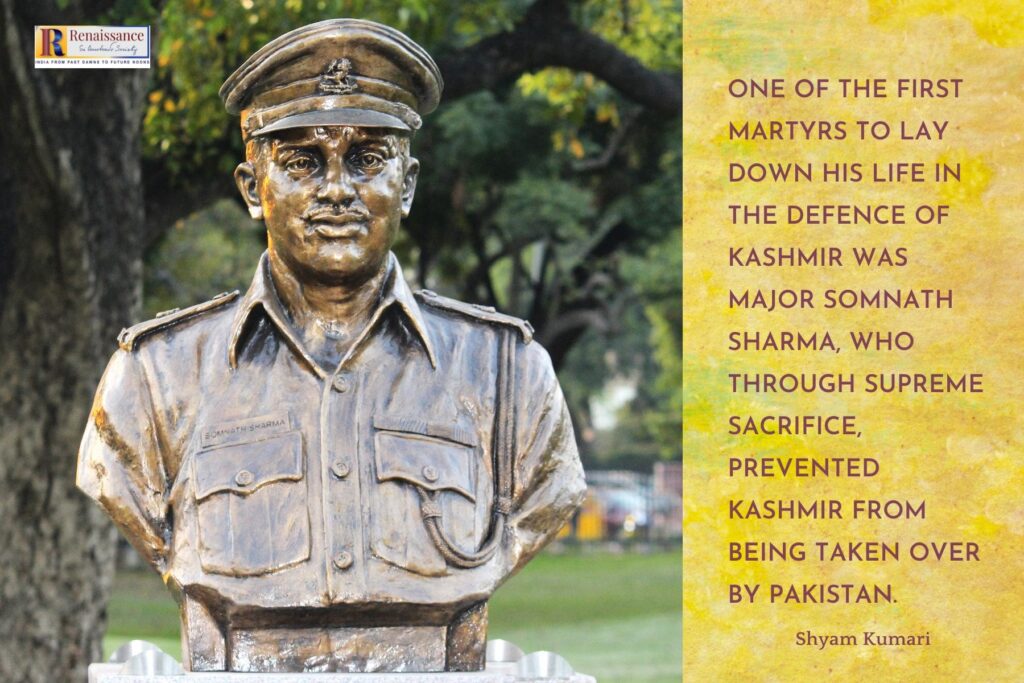
Major Somnath was born in an atmosphere of devotion and heroism.
His mother, Lila Devi Vasudeva was a woman of deep faith. She was married to an Army Officer, A. N. Sharma. It was natural that an Abhimanyu-like son was born to this devout and brave woman.
Somnath was born in Jammu on 31st January 1922. He was a handsome and cheerful boy. Very few people know that Major Somnath had a deep connection with Kashmir. His maternal grandfather, Pandit Daulat Ram Vasudeva was the Accountant General to the Maharaja of Kashmir. Som spent many days of his childhood with his grandfather in Srinagar, in defence of which he would later give his life. He often stayed with his grandfather because his father was posted in non-family stations.
His father retired as the Director of Medical Services with the rank of Major General. When his father was posted in Waziristan among the blood-thirsty tribesmen as an officer in the British Indian army, the grandfather would teach the Gita to his adored grandson Som. The boy imbibed the teachings of the Gita from his grandfather whom he respected as a Guru.
Somnath’s early education was in Hampton Court, Mussourie and Sherwood College in Nainital.
His father was keen that he should join the ICS but his brave son wanted to follow in his father’s footsteps and decided to join the army. Even through he was aware of his father’s wishes, Som seems to have made up his mind, as if he had started fulfilling his destiny at an early age.
As a boy of ten, he met the District Commander of Lucknow, Major General Bruce Hey and made an application to enter the Prince of Wales Royal Military College at Dehradun. The Commander selected him. In this way his training for the army started at the age of ten as soon as he entered this military College. It was a preparation for his self-sacrifice later on. He passed out of this college with distinction. His Principal, Mr. Scott wrote that Som was his most honest cadet and he was always happy to meet him. Som was proficient both in studies and sports activities. He was a good gymnast and a life-saver in swimming.
Som was a born leader.
Whenever he came home on vacations, he would take charge of his brothers and sisters. In his close-knit family, all his brothers and sisters and cousins accepted him as their leader. Of a well-built body, he was always cheerful. He would meet friends and relatives with openness and warmth. Whenever there was any dispute or argument in the family, he would always take his mother’s side and insist that his brothers and sisters and even his father show the same amount of regard for his mother as he did.
Once his younger brothers wanted to go for an evening cinema show. But their mother was not in favour of letting the children go out after dark. When his brother, Tindi tried to argue, he told him, “when mother doesn’t agree there must be reason. We shall not go.” Every evening before dinner their mother would do puja and kirtan and Som would take part in it with great enthusiasm.
After finishing his studies at the Prince of wales Royal Military College he joined the Indian Military Academy in Dehradun. From there he was commissioned in February 1942 at the age of 19 in the Hyderabad Regiment which later was renamed the 4 Kumaon Regiment. Soon after his commissioning, Som was sent off on active service in world War II. At that time he was just 20 years old. It appears that he was born just for war.
Continued in PART 2
Published by Vraja Trust, C/o Shyam Kumari, PO Sri Aurobindo Ashram, Pondicherry 605002
First edition: November 2005, Fourth revised edition: June 2020

~ Design: Beloo Mehra
~ Manuscript preparation: Biswajita Mohapatra

